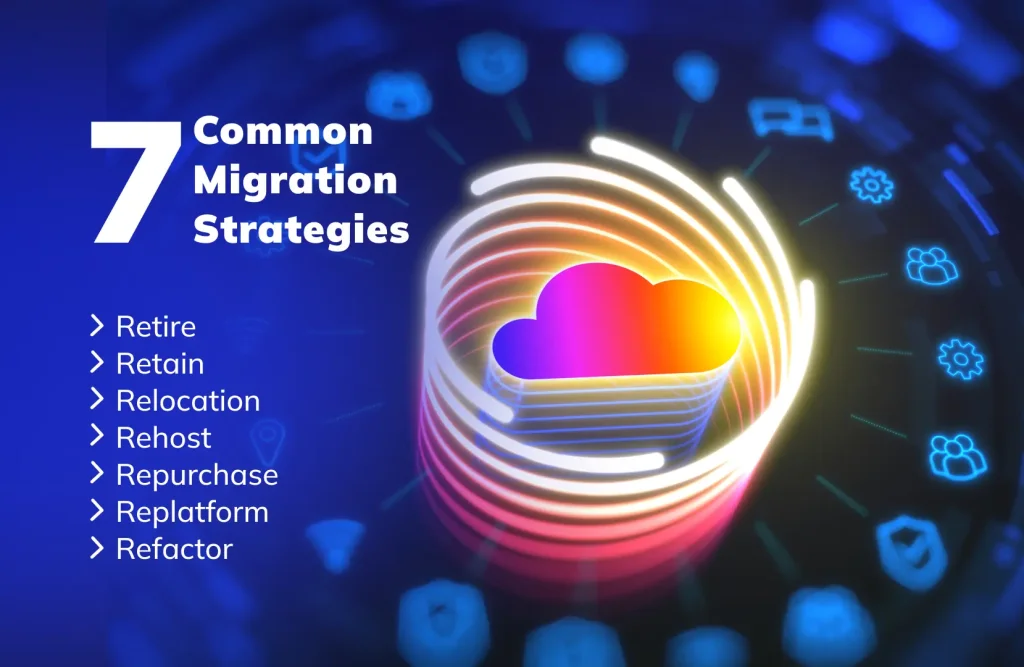To get the real benefits of the cloud, CIOs need a strategic cloud migration roadmap. This may sound obvious, but a surprisingly large number of CIOs continue to migrate to the cloud haphazardly with a minimal plan in place.
Most enterprises find themselves in a deeply hybridized service delivery environment, with several major and minor services delivered from the cloud as SaaS apps or via IaaS systems. However, the average CIO still has about 40% of IT workloads running in a data center.
As businesses recognize the pivotal role of cloud technology in achieving success, they are swiftly transitioning towards cloud migration strategies to drive growth. However, this shift poses challenges that require careful navigation.
Executing a successful cloud migration strategy demands meticulous planning, seamless collaboration, and alignment across the organization. It has emerged as a strategic imperative for companies aiming to maintain competitiveness and future-proof their operations, underscoring the importance of selecting the right cloud migration strategy supported by comprehensive planning.
Viewing cloud migration strategies as a roadmap provides a structured approach, guiding IT assets towards their new digital infrastructure with clarity and purpose. A systematic and well-documented strategy is vital as the cloud migration approach gains widespread acceptance and prominence.
Straits Research statess that the global cloud migration service market, valued at USD 10.8 billion in 2021, is projected to reach USD 68.2 billion by 2030, highlighting the pivotal role of a cloud migration strategy in driving business transformation akin to the revolutionary forces witnessed in IT since the inception of the digital age.
With this context in mind, this article aims to present a comprehensive roadmap tailored for C-Suites, empowering them to navigate the complexities of a cloud migration plan with confidence and effectiveness.
What are The Steps to Effectively Navigate a Cloud Migration Strategy
Here are a few crucial cloud migration steps to consider:
- Defining the Clear Objectives: Prior to initiating a cloud migration plan, it’s crucial to establish precise objectives that align with the overarching business strategy. Clear goals, such as cost reduction, scalability enhancement, or faster time-to-market, provide a guiding framework for decision-making throughout the cloud migration process.
- Conducting a Comprehensive Assessment: Evaluate existing IT infrastructure, applications, and data landscape to pinpoint cloud migration candidates. Consider application dependencies, performance needs, compliance, and security requirements. This assessment aids in prioritizing migration efforts and crafting a customized cloud migration strategy.
- Choosing the Right Cloud Model: Select the appropriate cloud deployment model—public, private, or hybrid—aligned with organizational needs, regulatory compliance, and data sensitivity. Factor in scalability, flexibility, and cost-effectiveness when choosing cloud migration solutions and service providers.
- Developing a Robust Migration Strategy: Develop a comprehensive cloud migration strategy with clear timelines, milestones, resource allocation, and risk mitigation plans. Divide the cloud migration process into manageable phases, beginning with low-risk applications and advancing to critical workloads. Utilize automation and orchestration tools to streamline the process and minimize business disruptions.
- Addressing Security and Compliance: Prioritize security and compliance in cloud migration strategies. Implement strong security controls, encryption mechanisms, and access management policies to protect sensitive data and mitigate cyber threats. Ensure adherence to industry regulations like GDPR, HIPAA, or PCI DSS by deploying cloud-native security solutions and conducting routine audits.
- Optimizing Cost Management and Fostering Organizational Alignment: Utilize cost tracking mechanisms and optimization tools to manage expenses effectively while promoting collaboration across IT, finance, operations, and compliance functions to ensure strategy alignment and active participation in the cloud migration process.
- Investing in Talent Development: Develop internal cloud expertise through training, certifications, and talent initiatives. Equip IT teams with necessary skills to architect, deploy, and manage cloud environments effectively. Collaborate with external consultants or cloud providers to enhance capabilities and expedite the cloud migration strategy.
- Implementing Ongoing Optimization and Performance Measurement: Implement ongoing monitoring and tuning to align with evolving business needs. Define and track key performance indicators (KPIs) such as cost savings and performance enhancements during the cloud migration process. Regularly evaluate progress and iterate on the strategy as necessary. Celebrate milestones to motivate teams and reinforce the importance of cloud adoption.
What are the 7 Rs of Cloud Migration Strategy

1. Rehosting, a relocation cloud migration strategy, facilitates the seamless transfer of existing databases from on-premises infrastructure to the cloud, commonly known as “lift and shift.” This approach allows for quick migration without requiring changes at the code level.
|
Success Story Maritz, a longstanding player on the incentive industry achieved 10x Performance Boost and Slashed Downtime with Oracle Cloud Rehosting Strategy Significant challenges:
Benefits Realized:
|
2. Replatforming, a modification cloud migration strategy, represents an enhanced version of rehosting. It entails making minor configuration adjustments to applications to enhance their compatibility with the cloud environment while preserving their core architecture. This approach resembles the ‘lift, tinker, and shift’ methodology.
|
Success Story Netflix Revolutionized 7x Faster with 50% Cost Savings and Unmatched Scalability! Significant Challenges:
Benefits Realized:
|
3. Refactoring, a re-architecting cloud migration strategy, entails completely rewriting applications to align them with cloud-native standards. This method involves leveraging microservices, serverless computing, and other native cloud technologies, rather than simply migrating applications as-is.
|
Success Story Airbnb’s Refactoring Triumph – A 60% Slash in Server Costs Significant Challenges:
Benefits Realized:
|
4. Repurchasing, a replacement cloud migration strategy, involves replacing an on-premises application with cloud-native vendor-packaged software. This cloud migration approach, often referred to as “drop and shop,” typically entails transitioning to a Software as a Service (SaaS) application with comparable features.
|
Success Story Spotify Achieved Soaring 40% Cost Reduction and Turbocharged Development with GCP Migration Significant Challenges:
Benefits Realized:
|
5. Retiring, a decommissioning cloud migration strategy, involves removing or downsizing applications from your IT portfolio that are no longer valuable or productive. This strategy entails assessing applications based on their utility, dependencies, and cost to the company, and removing those deemed unworthy of migration to the cloud.
|
Success Story Autodesk’s Cloud-First Leap with AWS – 400+ Apps, 97% Efficiency, and a 58% Footprint Cut! Autodesk, a leading technology company, strategically transitioned from a hybrid model to a cloud-first approach, partnering with AWS for a large-scale migration initiative. They successfully employed a “retire” cloud migration strategy, aiming for efficiency and innovation by shifting from a hybrid model to a cloud-first approach. Look at the perks!! Significant Challenges:
Benefits Realized:
|
6. Relocation, a hypervisor-level lift and shift cloud migration strategy, enables smooth migration of workloads between on-premises platforms (e.g., Kubernetes or VMware) and their cloud equivalents (e.g., GKE or EKS). This approach minimizes downtime and disruption, avoiding the need for code rewriting or hardware procurement.
|
Success Story Coca-Cola’s Delivers Zero-Downtime Migration, 40% Cost Savings, and Unmatched Business Agility by implementing a Relocate Strategy, utilizing Hypervisor-Level Lift and Shift migration. This involved migrating 600+ workloads, including critical SAP applications, from their VMware environment to the Google Cloud Platform (GCP). The move aimed to enhance agility, reduce costs, and improve disaster recovery capabilities, showcasing a practical Cloud migration strategy example in action. Significant Challenges:
Benefits Realized:
|
7. Retaining, a re-visiting cloud migration strategy, entails reviewing critical applications or digital assets that need substantial refactoring before transitioning to the cloud. In certain instances, it’s evident that some applications are better suited for on-premises setups or have recently undergone upgrades, making retention more appropriate.
|
Success Story Siemens Shifts Cloud Migration Strategy to ‘Retain and Optimize’ Amid Integration Challenges Significant Challenges:
Benefits Realized:
|
Conclusion
Transitioning to the cloud offers organizations ample opportunities to bolster agility, scalability, and innovation while simultaneously cutting costs and simplifying operations. Through a well-defined roadmap and adherence to industry best practices, C-Suites can adeptly navigate the intricacies of a cloud migration strategy and harness the complete benefits of cloud computing for their enterprise.
Ultimately, a thoughtfully executed cloud migration strategy, with specialized Cloud consulting services, allows companies to stay competitive, improve operational efficiency, and capitalize on the flexibility and advancements offered by cloud technologies. This strategic approach is a technical endeavor and a crucial driver of business transformation and success in the evolving digital landscape. Embracing cloud-first strategies, fostering a culture of ongoing enhancement, and empowering teams to spearhead digital transformation are key drivers of success in the cloud-centric business landscape.







